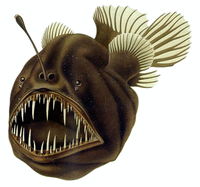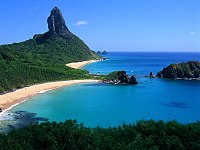
Metabolomic fingerprinting of Brazilian marine sponges: a case study of Plakinidae species from Fernando de Noronha Archipelago
Sign Up to like & getrecommendations! Published in 2021 at "Analytical and Bioanalytical Chemistry"
DOI: 10.1007/s00216-021-03385-6
Abstract: Marine sponges from the Plakinidae family are well known for hosting cytotoxic secondary metabolites and the Brazilian Atlantic coast and its oceanic islands have been considered as a hotspot for the discovery of new Plakinidae… read more here.
Keywords: noronha archipelago; fernando noronha; plakinidae species; marine sponges ... See more keywords

Prospects for domestic and feral cat management on an inhabited tropical island
Sign Up to like & getrecommendations! Published in 2017 at "Biological Invasions"
DOI: 10.1007/s10530-017-1446-9
Abstract: Cat management campaigns have been implemented on several islands worldwide. However, few successful campaigns have occurred on permanently inhabited islands. Cats are known for causing severe impacts on the native insular fauna, posing an important… read more here.
Keywords: management; fernando noronha; island; cat ... See more keywords

Toxoplasma gondii in invasive animals on the Island of Fernando de Noronha in Brazil: Molecular characterization and mouse virulence studies of new genotypes.
Sign Up to like & getrecommendations! Published in 2019 at "Comparative immunology, microbiology and infectious diseases"
DOI: 10.1016/j.cimid.2019.101347
Abstract: This study aimed to genetically characterize and to determine virulence from Toxoplasma gondii samples from invasive animals in the Island of Fernando de Noronha, Brazil. Blood samples were collected from 21 tegu-lizard (Salvator merianae), 12… read more here.
Keywords: animals island; island fernando; virulence; invasive animals ... See more keywords

Marine debris in the Fernando de Noronha Archipelago, a remote oceanic marine protected area in tropical SW Atlantic.
Sign Up to like & getrecommendations! Published in 2021 at "Marine pollution bulletin"
DOI: 10.1016/j.marpolbul.2021.112021
Abstract: Marine debris is widespread worldwide, from coastal areas to remote protected oceanic islands. We assessed marine macro-debris on the shores of Fernando de Noronha, an archipelago 360 km off Brazil that encompasses no-take and multiple-use areas.… read more here.
Keywords: noronha archipelago; area; fernando noronha; debris ... See more keywords

Seroprevalence and spatial distribution of Toxoplasma gondii infection in cats, dogs, pigs and equines of the Fernando de Noronha Island, Brazil.
Sign Up to like & getrecommendations! Published in 2017 at "Parasitology international"
DOI: 10.1016/j.parint.2016.11.014
Abstract: Little is known about toxoplasmosis in animals of the Fernando de Noronha Island, Brazil. Therefore, we investigated the prevalence of Toxoplasma gondii infection in the total population of pet cats (n=348), dogs (n=320), pigs (n=27),… read more here.
Keywords: gondii infection; pigs equines; infection; fernando noronha ... See more keywords

New records of rare deep-sea fishes (Teleostei) collected from off northeastern Brazil, including seamounts and islands of the Fernando de Noronha Ridge.
Sign Up to like & getrecommendations! Published in 2022 at "Journal of fish biology"
DOI: 10.1111/jfb.15155
Abstract: Here we report on new data on the occurrence and distribution of rare deep-sea fishes (Teleostei) collected from off northeastern Brazil, including seamounts and oceanic islands of the Fernando de Noronha Ridge (Rocas Atoll and… read more here.
Keywords: rare deep; sea fishes; deep sea; teleostei collected ... See more keywords

Tourism growth altering spinner dolphins’ area of occupation in Fernando de Noronha Archipelago, Brazil
Sign Up to like & getrecommendations! Published in 2017 at "Latin American Journal of Aquatic Research"
DOI: 10.3856/vol45-issue4-fulltext-16
Abstract: The objective of this study was to record the occupation of spinner dolphins at the northeastern end of the Fernando de Noronha Archipelago -a new occupation area. Data indicates that the area of the Inter… read more here.
Keywords: noronha archipelago; occupation; spinner dolphins; area ... See more keywords